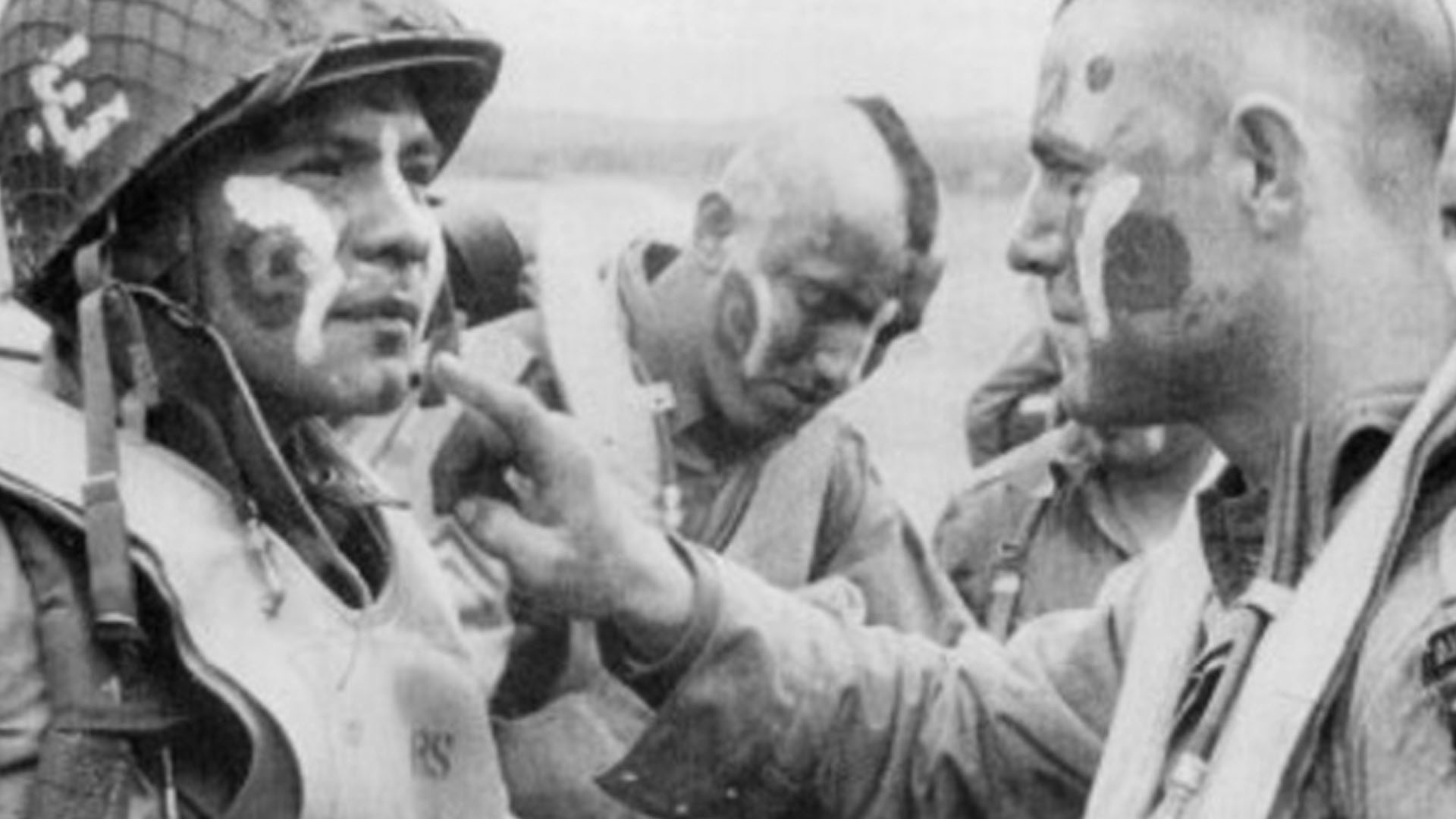Private First Class Jack Agnew would become a famous name in an infamous unit during World War Two. Though he served in the United States Army Air Force, he was born John Agnew in Belfast, Co. Antrim on 2nd January 1922.
At 5 years old, John Agnew emigrated from Belfast, Co. Antrim to the United States of America with his family. In 1942, as the United States Army entered World War Two, Agnew, then known as Jack enlisted.
Jack served with 3rd Battalion, 506th Parachute Infantry Regiment, 101st Airborne Division on D-Day. His elite unit were demolition and sabotage specialists and would become known as “The Filthy Thirteen”.
Agnew and “The Filthy Thirteen” were not only known for their fighting prowess on the battlefields of Europe. Their hard-drinking and hard-fighting ways inspired a book that later became the 1967 Robert Aldrich directed movie “The Dirty Dozen”. The movie starred Lee Marvin, Telly Savalas, Charles Bronson, Donald Sutherland, and Ernest Borgnine. In real life as well as on screen, when not preparing to kill the enemy or killing the enemy, the men had little time for the regulations of military life.
We had no respect or discipline to show to officers or really any of the regulations. We were really just a damn good bunch of soldiers.
Jake McNeice
They refused to salute superiors, mop their barracks or keep it clean, they went AWOL most weekends and returned when they liked. There are even stories of them stealing Jeeps, trains, and even a Colonel’s private stash of whiskey.
Agnew, McNeice and the rest of the crew accepted the few days of punishment, knowing the US Army needed them more than they needed the US Army. As a crack unit, they received quick promotions but their extra-curricular shenanigans often saw them bumped back down the ranks. At the time, their exploits often graced the pages of the US Army’s Stars and Stripes Magazine.
Actually, the scene where they captured the officers, Dad said that was true and he really coordinated that.
Barbara Agnew Maloney – Daughter of Jack Agnew.
Jack Agnew suggested that around 30% of the storyline of “The Dirty Dozen” was true. The film depicted the men as thugs and criminals, which was a disputed sore point among the surviving men of the real “Filthy Thirteen”.
We were always in trouble. We weren’t murderers or anything. We just didn’t do everything we were supposed to do in some ways, and did a whole lot more than they wanted us to do in other ways.
Jack Agnew.
Jack Agnew at War
On 6th June 1944, Jack Agnew and “The Filthy Thirteen” prepared to drop over Normandy, France in advance of the D-Day Landings. Their mission was to destroy a bridge over the Douve River. McNeice had psyched the unit up. The part Choctaw Indian had shaved the men’s hair into distinctive mohawk styles and daubed their faces with Native American style warpaint.
When we got ready to jump into Normandy, all of us had scalplocks, we also had our faces painted. It started a fad that is carried on today throughout most airborne units.
Jake McNeice
Out of 20 men in the unit who made the jump on D-Day, only 4 survived beyond the first day. Most men died in the first 2 hours. Jack Agnew, Jake McNeice, Jack Womer, and Robert Cone made it through the battle although McNeice only learned of Cone’s survival when reunited by a journalist in June 2002. Cone had gone missing in the landing and did not contact his comrades for over 60 years.
American Veterans' Center 2009
After D-Day, Agnew saw action in the Netherlands as part of Operation Market Garden and in Belgium where he received a shrapnel wound to the arm. In Belgium, he joined a Pathfinder unit and dropped behind enemy lines at Bastogne during the Battle of the Bulge. There, he operated a Eureka Beacon to guide in Dakota C-47 planes carrying supplies. He would also train with the Band of Brothers Easy Company, the unit who inspired the hit HBO drama.
Belfast-born John Agnew earned a Purple Heart and a Bronze Star with Oak Leaf for his daring military exploits with the US Army. On leaving the army, he attended Drexel University under the GI Bill and worked as an installer for Western Electric, a division of American Telephone and Telegraph.
In his later years, he talked of his wartime exploits and reunited with members of both the Band of Brothers and “The Filthy Thirteen”. They met in February 2009 at the Louisville Military History Show.
John Agnew died on Thursday 8th April 2010 at Abingdon Memorial Hospital, Pennsylvania, USA aged 88 years old. He had become ill at Maple Village Retirement Community in Hatboro, Pennsylvania, USA. His funeral took place with full military honours at Forest Hills Cemetery, Huntingdon Valley, Pennsylvania, USA. Agnew’s semi-automatic pistol remains on display at the NRA National Firearms Museum in Fairfax, Virginia, USA. He was the oldest living member of the National Rifle Association, having joined in 1938.
